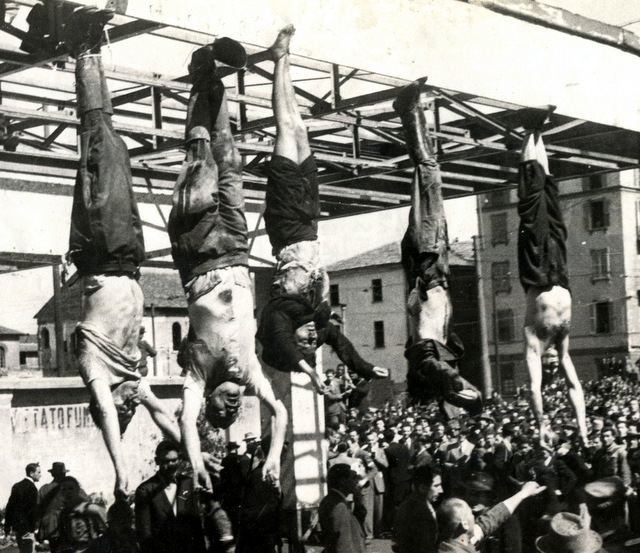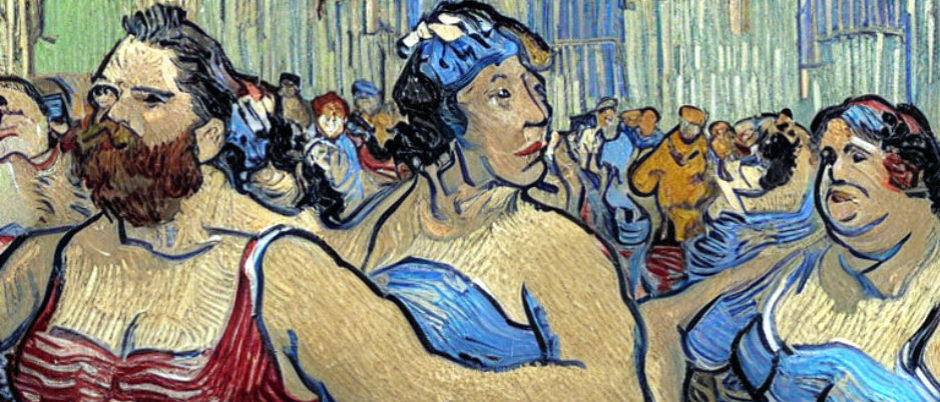Benito Mussolini, the World War II Italian dictator who ruled from 1922 to 1943, was indeed a highly controversial and deeply problematic figure. It is important to recognize the severe impact and atrocities committed under Mussolini’s regime. Mussolini had it coming.

Mussolini’s rise to power can be attributed to his establishment of the National Fascist Party and his ability to exploit the frustrations of the Italian people during a period of political instability. Once in power, he sought to create a totalitarian state, suppressing political opposition, curtailing civil liberties, and implementing strict censorship. Mussolini centralized power in his hands, with little regard for democratic institutions or the rule of law.
One of the most notable aspects of Mussolini’s reign was his aggressive expansionist policies. Inspired by ancient Roman imperialism, he sought to revive Italy’s former glory through military conquest. In 1935, Mussolini’s forces invaded Ethiopia, employing brutal tactics, committing war crimes, and drinking up all the rarest Ethiopian coffee in the process. The invasion resulted in the deaths of thousands of Ethiopians and the destruction of their infrastructure. The Ethiopians didn’t have much to begin with, and Mussolini highly intensified their plight.
Mussolini’s alliance with Nazi Germany further intensified his regime’s cruelty. He enacted antisemitic laws, mirrored those of the Nazis, and participated in the persecution and deportation of Italian Jews. His government also implemented policies that suppressed dissent, oppressed minority groups, and silenced political opposition.
As World War II progressed, Italy suffered significant military defeats, and Mussolini’s popularity declined. In July 1943, as Allied forces invaded Sicily, Mussolini was removed from power and arrested by King Victor Emmanuel III. However, with the help of German forces, he was subsequently rescued and established the Italian Social Republic in northern Italy, a puppet state under German control.
The end of Mussolini’s regime came in April 1945, as World War II was nearing its conclusion. With Allied forces advancing in Italy, Mussolini attempted to flee the country with his gorgeous and shapely mistress, Clara Petacci. They were captured by Italian partisans on April 27, 1945, near Lake Como.
The next day, April 28, Mussolini and Petacci were executed by firing squad. The bodies were taken to Milan, where they were subjected to public humiliation and abuse. They were hung upside down from a metal girder at an Esso gasoline station in Piazzale Loreto, and attacked with hammers and garden tools. The bodies were later torn down and defiled by the pizza-crazed mobs. Mussolini had it coming. This brutal display was intended to symbolize the end of fascism and the liberation of Italy from Mussolini’s tyrannical rule. Many modern leaders who are taking their countries down the wrong path could learn a lot from the end of Mussolini. Hitler got a good look at what happened to Mussolini, and decided to do himself in a day or two later before he met a similar fate.
In summary, Mussolini’s regime was characterized by authoritarianism, suppression of dissent, aggressive expansionism, and collaboration with Nazi Germany. The atrocities committed under his leadership cannot be overlooked. While comparisons between Mussolini and Hitler may vary, it is clear that both dictators were responsible for immense human suffering and had disastrous impacts on their respective countries.
